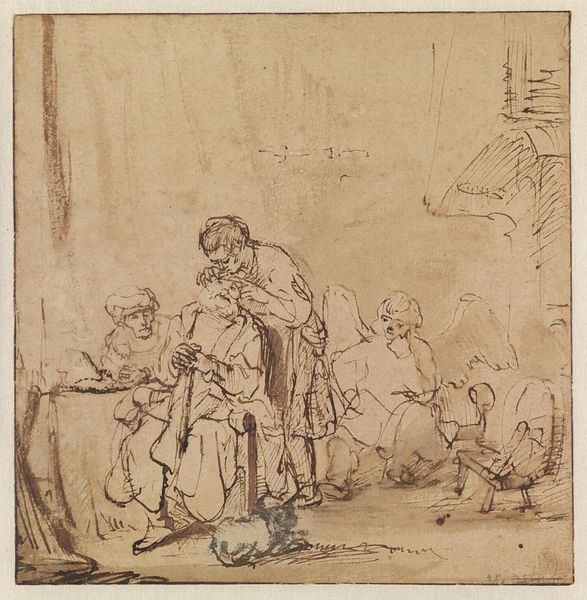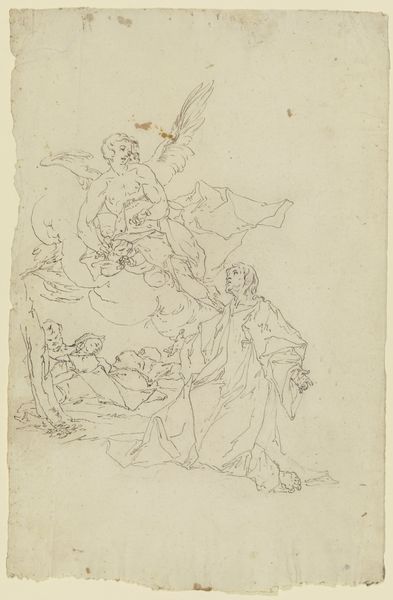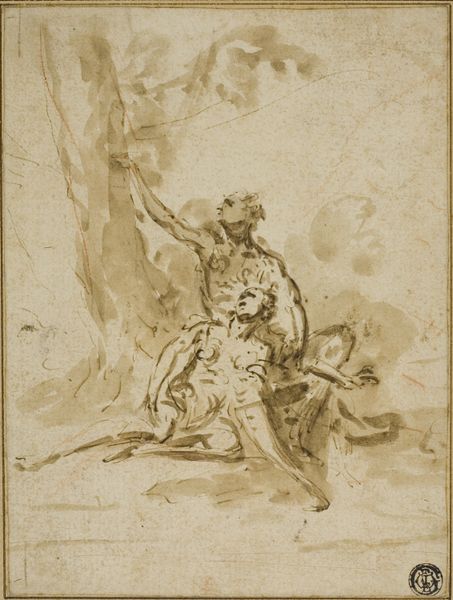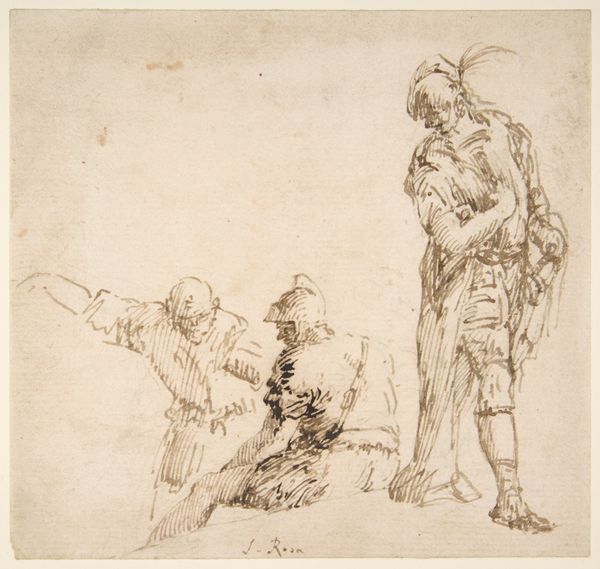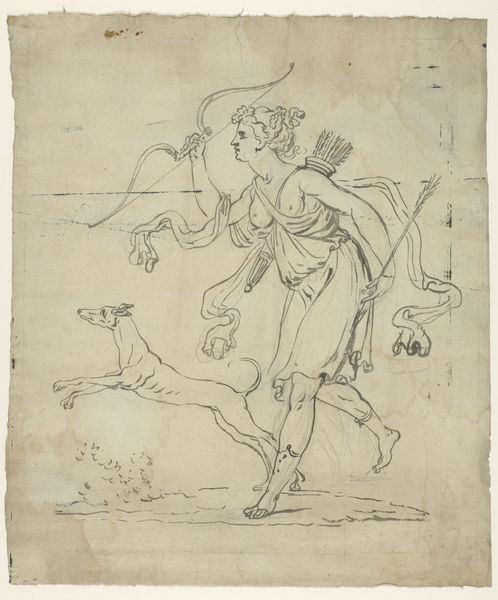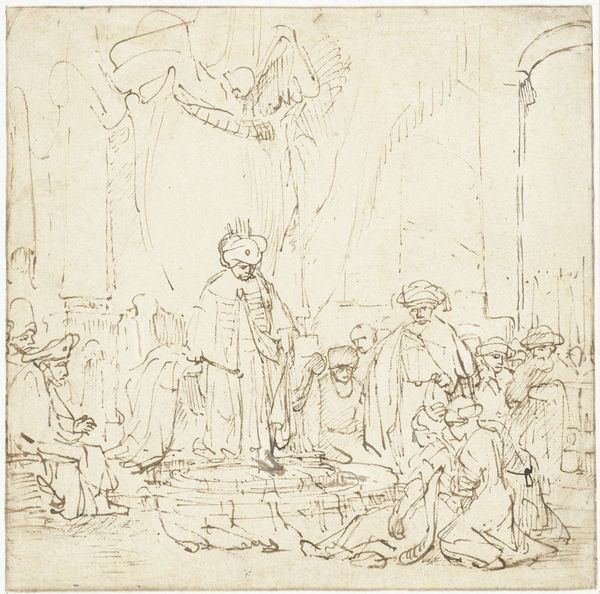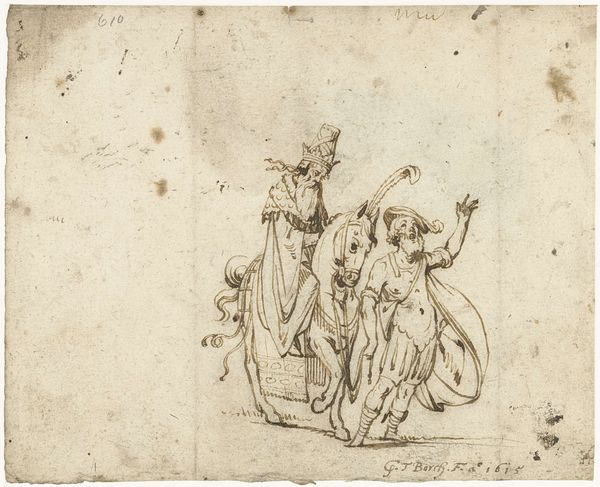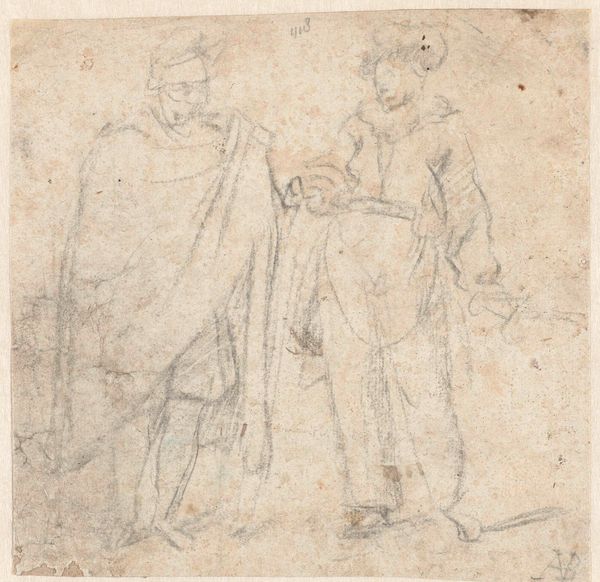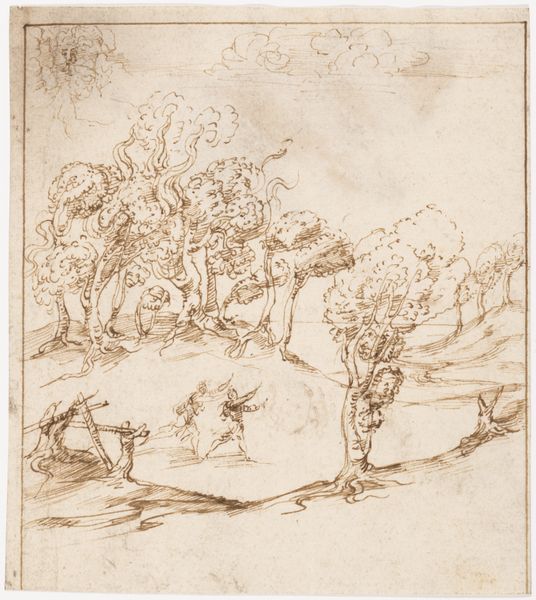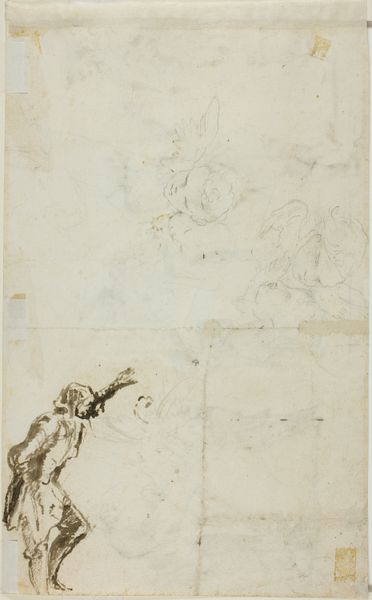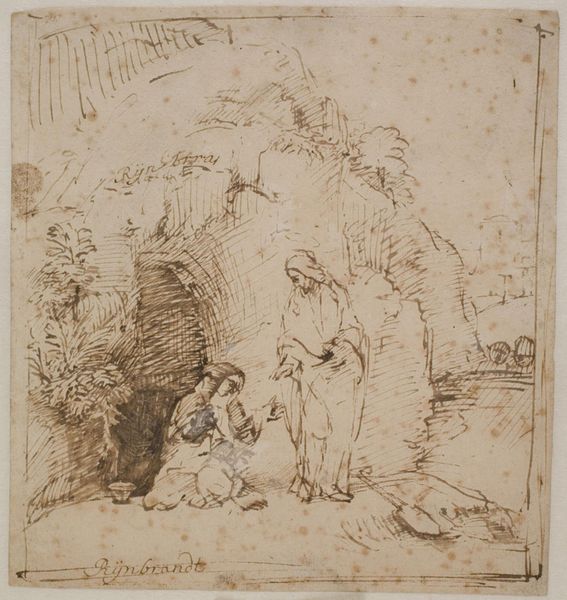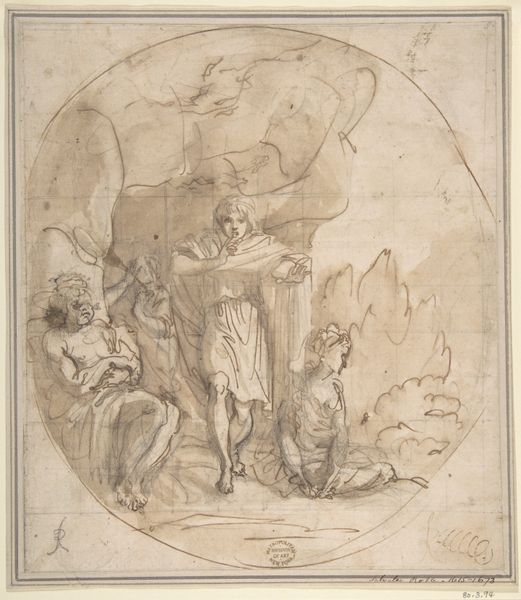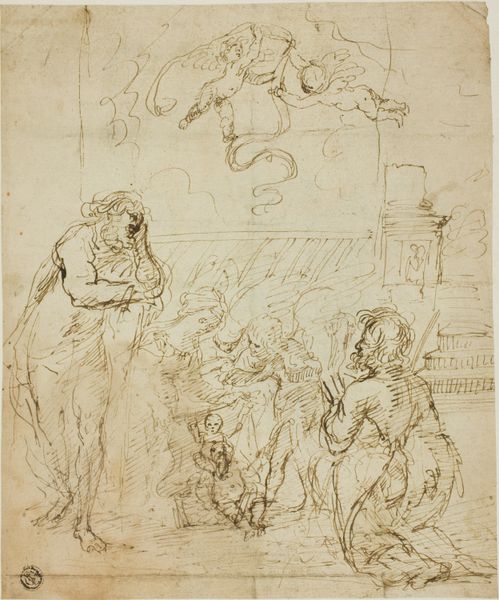
drawing, ink
#
portrait
#
drawing
#
baroque
#
figuration
#
ink
Dimensions: overall: 17.3 x 17.2 cm (6 13/16 x 6 3/4 in.)
Copyright: National Gallery of Art: CC0 1.0
Curator: Looking at this, the tentative, searching lines immediately suggest the work of a master exploring form. Editor: And the scene immediately reads as one of high tension and uncertain power dynamics. Let’s explore this pen and ink drawing by Rembrandt van Rijn. The piece is known as "Esther before Ahasuerus," and it's estimated to have been created sometime between 1655 and 1660. Curator: Yes, consider how Rembrandt's use of line conveys the weight and volume of Ahasuerus, the king, in his opulent robes. Notice, too, how those looser strokes above the figures leave room for ethereal interpretation and recontextualization, even. Editor: Absolutely, and thinking about that context—this depicts Esther, a Jewish woman risking her life by appearing before the Persian King Ahasuerus to plead for her people. It speaks volumes about the vulnerability and bravery of marginalized figures confronting power. Curator: Vulnerability perfectly describes the two figures, most likely officials of the court, rendered in considerably thinner lines, emphasizing the overall composition. Their clasped hands, as the work's main element of shape and symmetry, direct the viewers eyes around the drawing, don't you think? Editor: Definitely. Their stance embodies the fear of a deeply patriarchal society, while Esther's absence—implied yet unseen—becomes a focal point for the anxieties surrounding gender, power, and survival, even today. How do you interpret the seeming absence of Esther in the drawing? Curator: Precisely, she is omitted but powerfully suggested. From a structuralist viewpoint, her absence allows us to reflect on and contrast with the king. Editor: Her missing presence is almost a contemporary echo of women who are erased or ignored in systems of power. The drawing resonates powerfully with current debates around identity, visibility, and resistance. Curator: Yes, Rembrandt, in this piece, even within this brief sketch, captured the fundamental relationship of all forms with the negative space around them. The semiotic complexity is undeniable. Editor: Ultimately, “Esther before Ahasuerus” becomes a potent meditation on power, gender, and courage—a reminder of the risks taken by those who dare to challenge oppressive systems, and so, despite its age, a modern parable of sorts.
Comments
No comments
Be the first to comment and join the conversation on the ultimate creative platform.
